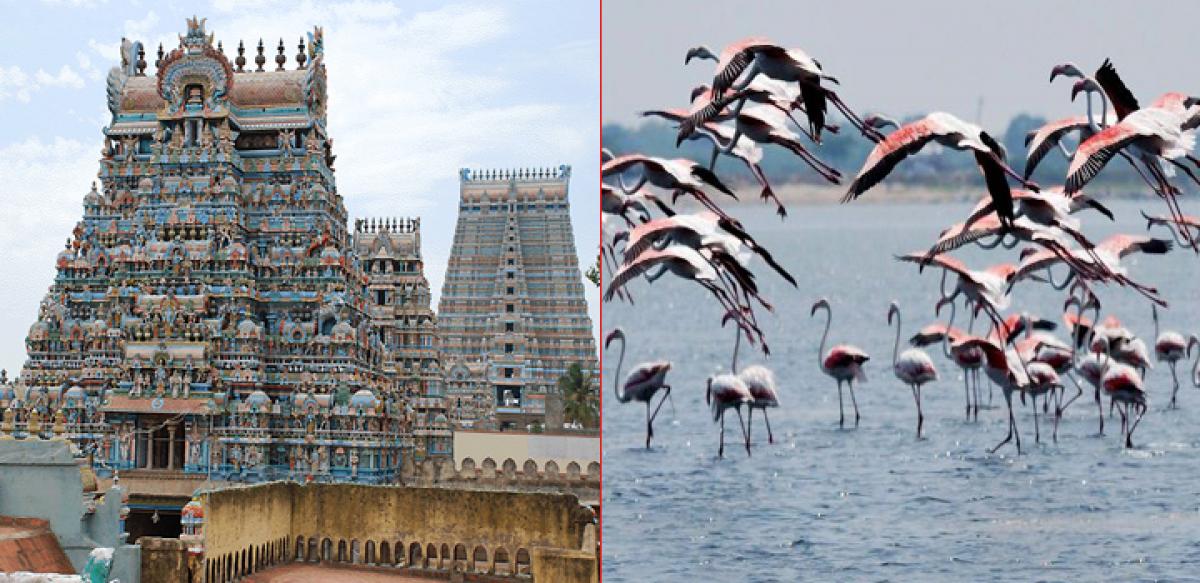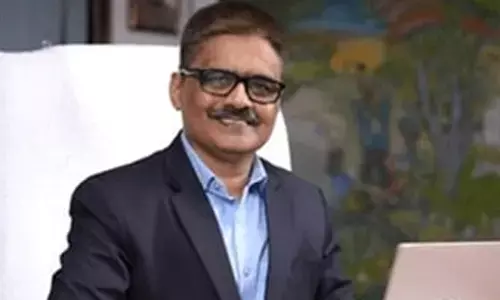The majestic beauty

As a vegetarian, I can\'t vouch for the former but of course, I have eaten the Komala Vilas thaali and would go there again and again for their mouth-watering, authentic south Indian vegetarian cuisine. But of course, I know Nellore\'s Chepala Pulusu (fish stew) is the region\'s most celebrated dish.
For my foodie friends in our group, who were going on a personal trip to Nellore city in coastal Andhra Pradesh, said that the place had only two big attractions. I thought they meant Mypadu beach and the Sri Ranganathaswamy temple. But no, they were talking of the region's legendary Nellore Chepala Pulusu and the equally renowned Komala Vilas bhojanam.
As a vegetarian, I can't vouch for the former but of course, I have eaten the Komala Vilas thaali and would go there again and again for their mouth-watering, authentic south Indian vegetarian cuisine. But of course, I know Nellore's Chepala Pulusu (fish stew) is the region's most celebrated dish.
Nellore is the place, where the greatest of the Telugu poets, Tikkana Somayaji, who translated the major part of Mahabharata into Telugu, lived. The place has rich heritage and mouth-watering cuisine and it holds an important place historically
Unlike the beaches at Visakhapatnam, the Mypadu beach is less crowded and was almost deserted when we reached there. You have to drive out of the city for about 20 minutes to reach this beach.
The sunrise over the sea was a stunningly beautiful sight and we later spotted fishermen in the distance. Fishing is an important activity in this region as is agriculture. We were told that cruises are arranged here by the State government but we saw no activity — perhaps it was too early in the day for this.
We returned to our accommodation, changed and left for the city's most famous temple, the Sri Ranganathaswamy temple aka Talpagiri Ranganathaswamy Gudi. It dates back several centuries and has additions and alternations made to its structure by different dynasties.
Its splendid gopuram is a fixture in the tourism brochures and postcards sold in the city and a favourite photo-op for visitors. Soaring 80 feet (the figure given by the priest) into the sky this gaali gopuram (or wind tower) is topped by seven gold kalashams (auspicious pot-shaped vessels).
It is visible from miles away and in fact, if you are travelling by train, you will find excited people straining to catch a sight of it from windows and even the train door as one nears the city. It is very close to the railway station in fact and if you have a couple of hours at this station, you can easily see the temple and return in time.
Inside the temple are several sub-shrines to Goddess Ranganayaki (the consort of Ranganatha) and the 12 Alwars, which we walked past before arriving at the main shrine, the sanctum-sanctorum where the presiding deity, Sri Ranganathaswamy is seen in a reclining position. The temple is located on the banks of the river Penna.
It is said that poet Tikkanna Somayaji, one of the three famous authors of the Andhra Mahabharatham, wrote his part of the epic on these river banks. Tikkanna and Potti Sriramulu, the man who died fasting for the formation of Andhra Pradesh, are two of Nellore's most famous biddalu (children)!
We headed off for the Komala Vilas lunch, where the staff makes you feel like you are a family member, who has come home to eat. Our non-vegetarian friends waited patiently as we ate ghee-soaked rice with sambar, appadalu and then majjiga pulusu, etc.
We then we left for another restaurant, where it was our turn to wait as they feasted on local specialities like steamed rice with Nellore Chepala Pulusu, Royyala Vepudu (prawn fry), and Mutton Biryani.
We, of course, were sated but had bites of a Nellore Pesarattu. The cuisine of this region is popular across the State and even beyond, and the locals like to boast that they are among the best cooks in the country.
Waiting for our friends to finish their meal, we read up a few tourist brochures we had picked up outside the temple. Nellore has a long and hoary history tracing its origins back to the Mauryans. At different points in time it had been ruled by the Mauryas, Kharavelas (Chendi dynasty), and almost all the famous dynasties/empires of south India like the Satavahanas, Kakatiyas, Pallavas, Cholas , Pandyas, Telugu Cholas, Vijayanagaram empire, Arcot Nawabs, etc. Finally, the Britishers took over India, and Nellore came and under the Madras Presidency.
The city's earlier name was Vikrama Simhapuri, at least that was how it was called until the 13th century according to one guidebook. The word Nellore itself is derived from the two words Nelli (meaning tree) and Ooru (meaning village). The city is now part of the recently renamed Sri Potti Sriramulu Nellore district and the headquarters of the district administration.
We had only an hour each at two places near Nellore which draw thousands of visitors, the Pulicat Lake and Nellapattu (aka Nelapadu) Bird Sanctuary. Pulicat is the second largest brackish water lake or lagoon in India (Chilka is the largest) and the migratory birds that descend here, especially the flamingoes, draw thousands of bird lovers and photographers every year.
We had barely passed by the gates of Nelapadu Sanctuary when we realised we were going to miss our train if we did not begin our return journey immediately, as we also had shopping to do. So we reluctantly turned back.
How can one return from Nellore without Venkatagiri sarees? The gorgeous handloom sarees made in the eponymous town, are famed for their gossamer quality, vibrant hues, smooth feel, dazzling zari, and elegant appearance.
At one time, Venkatagiri sarees were known as the choice of royalty. In keeping with modern market demands the weavers have also begun making stand-alone dupattas and salwar-kameez sets. I had been burdened by a long shopping list of friends, neighbours and cousins, so I did the needful. We just about managed to catch our train and promised ourselves a more leisurely visit at another time.
There are several places around the city, which we did not have time to visit but would recommend as worth your time. A short distance from the city is the village of Jonnawada with Sri Mallikarjunaswamy and Kamakshi temple.
Two famous Narasimha temples are also close to the city and there are regular buses to these pilgrim sites. One is Penchalakona, where the deity is called Somasila Narasimha. This is one of the Nava Narasimhas or nine manifestations of the half-lion, half-man incarnation of Vishnu. The second is the Vedagiri Lakshmi Narasimhaswamy temple.
Although it is primarily a Moslem festival, visitors of different faiths and from India and foreign countries throng Nellore during the Rottela Panduga, held around the end of January every year. This is the festival of rotis held at Bara Shaheed Dargah, which has a mausoleum to 12 martyrs, hence the name. For those who prefer natural beauty, a visit to Somasila Dam, it is big and very scenic.
By: Aruna Chandaraju


















